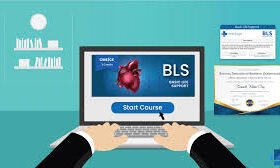Software development involves a set of procedures that programmers follow to build computer programs. These procedures constitute the stages of the life cycle. Grasping the development process opens up numerous possibilities in the IT field.
In this piece, we’ll delve into what software development entails, categorize different types of computer programs, and examine the various roles that involve utilizing the IT development process.
What is software development?
Software development refers to the method programmers employ to create computer programs. This process, often called the SDLC, consists of multiple stages designed to ensure that products meet both technical specifications and user needs.
The SDLC serves as a global standard that software development firms can adopt to enhance their programs. It provides a clear framework for development teams to adhere to during the planning, creation, and upkeep of top-notch software. The goal of IT software development is to produce efficient products within predetermined budgets and schedules.
Key steps in the software development process
Recognizing Needs
This step involves researching the market and brainstorming ideas. Before creating software, a Custom software company needs to study the market extensively to see if the product will be successful. Developers need to figure out what functions and services the software should have to be valuable to its users.
They gather this information through customer feedback and surveys. Additionally, the company’s IT teams and other departments discuss the product’s strengths, weaknesses, and opportunities. Software development begins only if the product meets all the necessary criteria for success.
Understanding Requirements
Requirement analysis marks the second step in the software development life cycle. During this phase, stakeholders collaborate to define both technical and user requirements, as well as specifications for the intended product, ensuring it meets its objectives.
It involves creating a comprehensive plan outlining each component, the project scope, developer responsibilities, and criteria for testing to ensure the final product’s quality.
This stage of requirement analysis engages developers, users, testers, project managers, and quality assurance personnel. It’s also the phase where the development approach, such as waterfall or V model, is selected by the programmers. The findings of this phase are documented in a Software Requirement Specification (SRS) document, serving as a reference throughout the project’s execution.
Software design
Design is the third step in creating software. At this stage, architects and developers create detailed plans for how the software will be built to meet specific requirements. Stakeholders discuss various factors like risks, team setup, technologies to use, time, budget, project constraints, and design methods.
The Design Specification Document (DSD) outlines the architecture, components, communication, user interface, and user experience of the product. This document serves as a guide for developers and testers, helping to minimize errors and project delays.
Creating and applying the design
After planning, the next step involves creating and applying the design parameters. Developers write code according to the agreed product specifications and requirements from earlier phases. Following company protocols, front-end developers construct interfaces, back-end developers work on server-side functionality, and database administrators set up necessary data structures. Additionally, programmers conduct testing and code reviews.
Once coding wraps up, developers move to the implementation phase, where they deploy the product to a testing environment. This step allows them to assess a pilot version of the software to ensure it meets performance standards.
Software testing
During the testing phase, experts check the software for mistakes and how well it works before giving it to users.
They might try out different things if they know the software well, or they might follow a set plan to check different parts of the software. When they find problems, they tell the people who created the software about them. If the creators agree, they fix the issues, and the testers try again until everything works correctly and matches what was planned.
Deployment and upkeep
After ensuring the software is free of defects, developers can send it to customers. Once the production version is released, the IT company establishes a maintenance team to address any issues clients face. For minor problems, quick fixes are applied, but the major one failures necessitate updates.
Different Kinds of Software
Software can be divided into three primary groups depending on how they’re used. Below are the common types of software.
System Software
System software, also known as the operating system (OS), is the software that your computer relies on to interpret input commands into a language the machine can understand. The OS manages the hardware components of a computer.
Popular examples of operating systems for personal computers include Microsoft’s Windows OS, Apple’s Mac OS for MacBook, and Ubuntu, which is based on Linux. Web servers typically use the Apache OS, while proprietary systems are built on the UNIX operating system.
Software Applications
These are the programs that people commonly use to do things on their computers and smartphones. Examples include word processors, web browsers, media players, photo editors, antivirus software, and software-as-a-service (SaaS) products.
Programming Languages
These are the languages that developers use to write software. They’re used by coders to create programs. Some examples of programming languages are Java, C++, PHP, and Simlab.
FAQs
Is software development the same as coding?
Coding represents just one aspect of software development. While it involves programming tasks, it encompasses a broader spectrum of activities. Software developers utilize code to instruct computers on executing specific functions within a program. Additionally, they engage in tasks such as planning, designing, testing, and maintaining the software they create.
What are the educational requirements for becoming a software developer?
To pursue a career as a software developer, individuals typically obtain a bachelor’s degree in fields such as software engineering, IT, computer science, or related disciplines. Undergraduate programs in these areas typically span three to four years.
How much can one earn as a software developer?
On average, a software engineer earns around $114,584 annually. However, actual earnings may vary depending on factors such as education level, professional experience, employer, and geographical location.














Leave a Reply